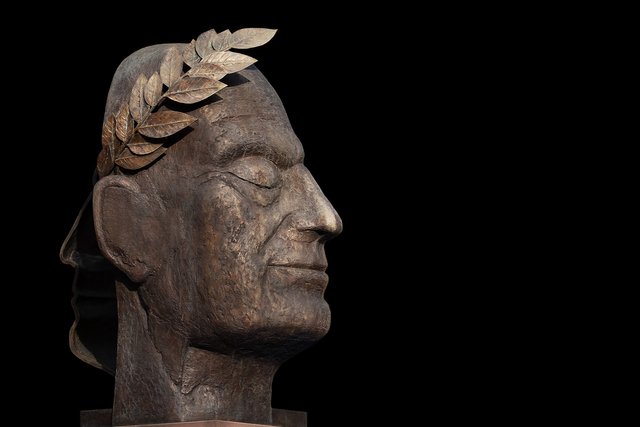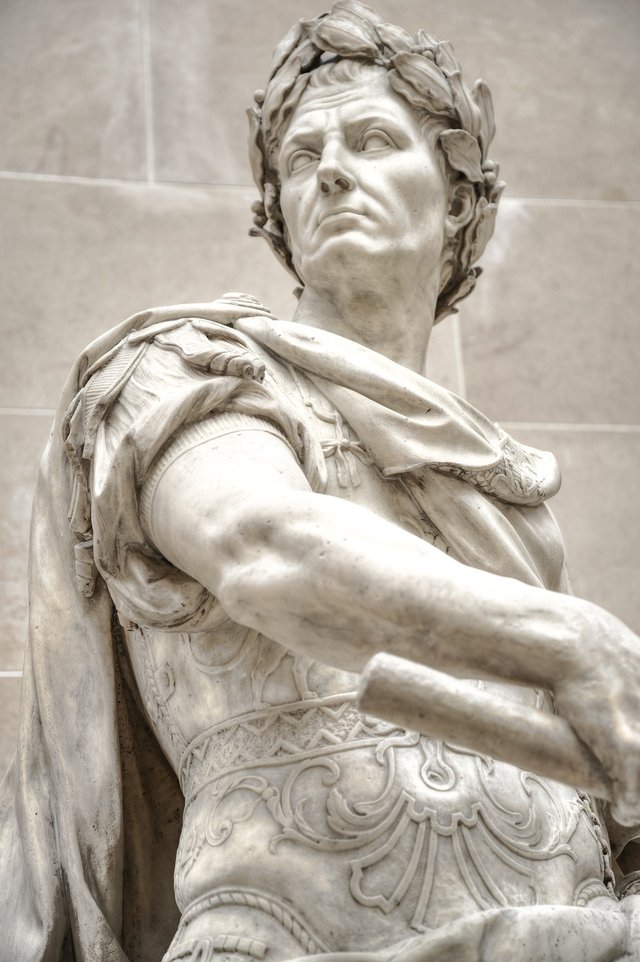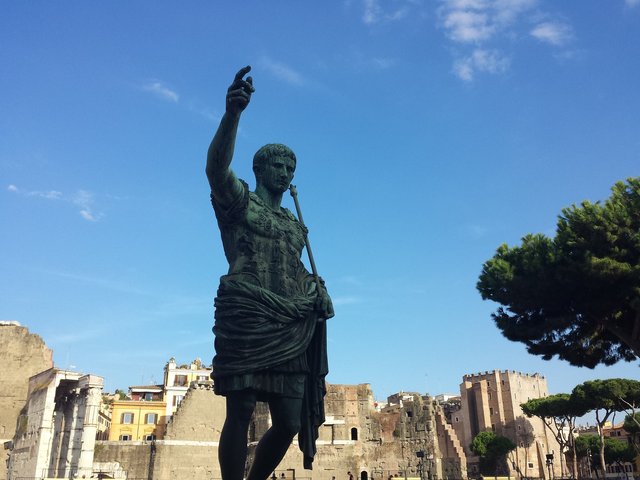Roma antica. Nascita, ascesa e declino./Ancient Rome. Birth, rise and decline. [ITA/ENG]
Dalla fondazione della città nel 753 a.C. fino alla creazione della Repubblica nel 509 a.C. la città fu governata da 7 re: Romolo (753-717), Numa Pompilio (717-674), Tullio Ostilio (670-638), Anco Marzio (641-616), Tarquinio Prisco (616-578), Servio Tullio (578-534), Tarquinio il Superbo (534-509).

La Repubblica
Nell'anno 509 a.C. iniziò il periodo della repubblica che durò quasi 500 anni, ma a causa dell'ultimo re Tarquimia l'arrogante lasciò il popolo con un grande rifiuto della monarchia. Con l'avvento della repubblica a Roma, il potere passò ai patrizi, capi delle principali famiglie che formavano il senato ed erano eletti dai cittadini alle varie cariche pubbliche. Le istituzioni romane furono concepite in modo che nessun uomo avesse troppo potere. Il governo era esercitato da due consoli che venivano rinnovati di anno in anno. I poteri di governo erano il Senato e le assemblee dei cittadini plebei che eleggevano le cariche pubbliche, ma i patrizi godevano di molti privilegi, erano gli unici a poter ricoprire cariche in Senato, erano gli unici a poter ricoprire cariche pubbliche. Solo i patrizi facevano le leggi, le eseguivano e punivano anche chi infrangeva la legge. I plebei si riunivano solo per eleggere i magistrati, poi i plebei fecero molte lotte contro i patrizi per rivendicare i loro diritti, come nel 494 a.C. i plebei smisero di coltivare la terra, di servire nell'esercito e di commerciare e non sarebbero tornati al loro lavoro finché non fossero stati riconosciuti i loro diritti, allora il senato costituì una nuova magistratura chiamata tribuni della Plebe. Questi magistrati potevano appartenere solo a cittadini plebei e avevano il diritto di porre il veto su qualsiasi risoluzione senatoriale. Nel 451 a.C. 10 saggi redassero la Legge delle 12 Tavole, che fu la prima legge scritta di Roma e fu un grande trionfo per la plebe.
Fin dall'inizio della Repubblica Roma aveva esercitato un grande dominio sulle altre città latine, ma le città del Lazio cercarono di sottrarsi al giogo romano, dando origine alle Guerre Latine che durarono 150 anni.
Poi, per 50 anni, Roma ebbe altre guerre, note come Guerre Sannitiche.
Nel 272 a.C. Roma dominava l'intera penisola italiana ed era già una delle potenze più potenti del suo vicinato, per cui lo scontro con l'altra potenza del Mediterraneo, Cartagine, era inevitabile. Nel 264 a.C. iniziò la prima delle tre guerre puniche, ma Roma non aveva esperienza di battaglie navali perché i Punici distrussero le poche navi inviate da Roma e Roma si rese conto che la sua fanteria era più forte, così creò delle passerelle di legno con cui i legionari potevano attraversare le navi nemiche e nelle battaglie corpo a corpo i Cartaginesi persero. Mezzo secolo dopo, nel 213 a.C., iniziò la seconda guerra punica, che oppose Annibale a Scipione, e questa volta Roma fu quasi sterminata, poiché i Romani vinsero alle porte di Romana grazie a Scipione Africano. La terza guerra punica, nel 145 a.C., fu condotta da Scipione Emiliano e per questo si inventò una scusa: con questa vittoria Roma divenne la prima potenza in tutto il Mediterraneo occidentale.
Il I secolo a.C. fu il più terribile della storia di Roma antica, in questo periodo Roma si dissanguò in innumerevoli guerre civili, perché le istituzioni erano insufficienti a gestire le loro posizioni e i generali avevano già abbastanza potere ed entrarono nelle dispute, prima Mario e Sila, poi Cesare e Pompeo e infine Marco Antonio e Augusto. Poi il Senato e la cittadinanza cedettero il potere ad Augusto, dando così inizio nel 27 a.C. all'Impero.

L'Impero
Il primo successore di Augusto fu Tiberio, un grande generale. Disprezzava l'adulazione dei vecchi senatori e trascorse gli ultimi 10 anni della sua vita ritirandosi sull'isola di Capri.
Il successore di Tiberio fu Caligola, che si credeva un Dio vivente e fece rimuovere le teste degli dei dal suo palazzo per metterci la propria. Avendo attirato l'odio di coloro che gli erano più vicini, fu assassinato dopo soli 4 anni di regno.
Il suo successore fu lo zio Claudio, che governò l'impero con grande saggezza. Il suo successore fu Nerone, ragazzo vanitoso e crudele, che morì nel 68 d.C. quando fu costretto a suicidarsi e non lasciò eredi, ponendo così fine alla dinastia giulio-claudia.
La nuova dinastia fu inaugurata dal generale Vespasiano. Vespasiano era un grande amministratore e un uomo semplice. Dedicò tutto il suo regno al governo dell'impero. Alla sua morte gli successe Tito, che i Romani chiamavano Delizia dell'Umanità per il suo carattere generoso, ma morì due anni dopo e gli successe il fratello Domiziano: Domiziano era un governatore apprezzato nelle province perché giudicava severamente i governatori corrotti, i Romani finirono per odiarlo per la sua crudeltà. Fu assassinato dopo 16 anni di governo. I Romani elessero allora un imperatore di transizione di nome Nerva. Questi adottò Traiano come suo erede. Traiano salì al trono nel 98 d.C. e iniziò il periodo più glorioso dell'impero. Gli imperatori successivi furono Adriano (21 anni), Antonino Pio (23 anni) e Marco Aurelio (19 anni).
Il II secolo fu considerato l'età dell'oro dell'Impero romano: vi fu una grande pace nell'impero, furono creati acquedotti, strade e grandi edifici pubblici.
Marco Aurelio cede il potere al figlio Commodo, ponendo fine all'Età dell'Oro e dando inizio all'Età del Ferro. Questo imperatore volle che i Romani lo venerassero come Ercole, cambiò il nome dei mesi e persino il nome di Roma. Fu assassinato da uno dei suoi schiavi. Il nuovo imperatore fu Settimio Severo, inaugurando la dinastia dei Severi; il suo successore fu Caracalla, che nel 212 d.C. diede la cittadinanza romana a tutti gli abitanti dell'impero. Fu assassinato nel 217 d.C. Il III secolo d.C. fu un periodo molto difficile per l'impero, con almeno cinquanta imperatori, alcuni dei quali regnarono solo per pochi giorni. Nel 285 d.C. l'imperatore Diocleziano intraprese una serie di riforme e decise di dividere l'impero in due, fondando la tetrarchia. Le due parti dell'impero erano governate da un imperatore con il titolo di Augusto. . Le due parti dell'impero erano governate da un imperatore con il titolo di Augusto. L'imperatore successivo fu Costantino che nel 313 d.C. proclamò la libertà di culto e il cristianesimo divenne la nuova religione ufficiale di Roma; questo imperatore fondò la nuova città di Costantinopoli che divenne la capitale. Nel 378 d.C. salì al trono Teodio il Grande, che stipulò accordi con i soldati barbari per servire nell'esercito, dichiarò il cristianesimo religione ufficiale di Roma e bandì il paganesimo. Alla sua morte Teodio decise di dividere l'impero tra i suoi due figli. L'impero occidentale fu lasciato nelle mani di Onorio e quello orientale in quelle di Arcadio. Nel 402 d.C. i Goti invasero l'Italia, bruciando e saccheggiando le città sul loro cammino. Nel 475 salì al trono Romolo Augustolo, che divenne l'ultimo sovrano dell'impero. L'Impero Romano d'Occidente finì così e l'Impero Romano d'Oriente durò altri 1000 anni, fino a quando i Turchi, nel 1453 d.C., sconfissero l'ultimo imperatore bizantino.

Ancient Rome. Birth, rise and decline.
The birth of Ancient Rome is lost among mythological stories and legends. Its beginning was humble like many other cities in the Lazio region. Ancient Roman historians believed that the empire that would once dominate the world must have had a glorious birth that they embellished with stories of gods and great mythological heroes. Rome was founded according to tradition by 2 brothers named Romulus and Remus who decided to found this settlement on the banks of the Tiber River, but both disagreed on where they would found the city, Romulus wanted to found it on the Palatine Hill, while Remus wanted it to be on the Aventine Hill. Not being in agreement they decided to leave it to the judgment of the gods and each one in their hills decided to wait for a sign from above. On the morning of April 21, 753 B.C. Remus spotted 6 vultures over the Aventine and quickly went to Romulus to announce his victory and at that very moment 12 birds flew over the Palatine, then Romulus began to dig a pit that would set the limit of the new city and made an oath that anyone who crossed it would be killed and Remus, angry for his defeat, challenged him and was the first to die for wanting to cross the sacred limit of the city.
From the foundation of the city in 753 BC until the creation of the republic in 509 BC the city was ruled by 7 kings who were Romulus (753-717),Numa Pompilius (717-674),Tullius Hostilius (670-638),Ancus Martius (641-616),Tarquinius Priscus (616-578),Servius Tullius (578-534),Tarquinius the Superb (534-509).

La Republica
In the year 509 B.C. would begin the period of the republic that would last almost 500 years, but because of the last king Tarquimia the arrogant left in the people a great rejection towards the monarchy. With the advent of the republic in Rome the power fell on the Patricians, heads of the main families that formed the senate and were elected by the citizens for the various public offices. The Roman institutions were designed so that no one man had too much power. The government was exercised by two consuls who were renewed from year to year. The governing powers were the Senate and the Assemblies of Plebeian citizens who elected the public offices, but the Patricians enjoyed many privileges, they were the only ones who could hold office in the Senate, they were the only ones who could hold public office. Only the Patricians created the laws, executed them, and also punished those who violated the law. . The Plebeians only met to elect the magistrates, then the plebeians had many struggles against the patricians to demand their rights, as in the year 494 BC that the plebeians stopped cultivating the land, serving in the army and trade and would not return to their work until their rights were recognized, then the Senate constituted a new magistracy called the tribunes of the Plebs, these magistrates could only belong plebeian citizens and had the right to veto any Senate resolution. In the year 451 B.C. 10 wise men wrote the Law of the 12 Tables which was the first written Law of Rome and was a great triumph for the Plebs.
Since the beginning of the Republic Rome had exercised a great dominion over the other Latin cities, but the cities of Latium tried to free themselves from the Roman yoke, which gave rise to the Latin Wars that lasted 150 years.
Then for 50 years Rome had other wars known as the Samnite Wars.
In the year 272 BC Rome already dominated the entire Italian peninsula and was already one of the most powerful powers in its environment so it was inevitable a confrontation with the other power of the Mediterranean, Carthage. In the year 264 B.C. the first of the 3 Punic Wars began but Rome had no experience in naval battles because the Punics destroyed the few ships that Rome sent and Rome realized that its infantry was stronger so they created wooden gangways with which the legionaries could cross the enemy ships and in a melee battle the Carthaginians lost. Half a century later, in the year 213 B.C., the second Punic War would begin, which would confront Hannibal and Scipio and this time Rome was almost exterminated because at the gates of Romana the Romans won thanks to Scipio Africanus. The Third Punic War in the year 145 B.C. was led by Scipio Emilianus and for this they invented an excuse, with this victory Rome became the main Power of all the Western Mediterranean.
The First Century B.C. was the most terrible in the History of Ancient Rome, in this period Rome bled in countless civil wars, because the institutions were insufficient to manage their positions and the generals already had enough power and entered into disputes, first Mario and Sila, then Caesar and Pompey and finally Mark Antony and Augustus. Then the Senate and the citizenry handed over power to Augustus, thus beginning in 27 B.C. the Empire.

The Empire
Augustus' first successor was Tiberius, a great general. He despised the adulation of the old Senators and spent the last 10 years of his life retired on the island of Capri.
Caligula was the successor of Tiberius who believed himself to be a God in life and had the heads of the Gods torn off his palace to put his own. After having attracted the hatred of the people closest to him, he was assassinated only 4 years after the beginning of his reign.
His successor was his uncle Claudius and ruled the empire with great wisdom. His successor was Nero who was a vain and cruel boy. He died in 68 A.D. when he was forced to commit suicide and left no heir, thus putting an end to the Julio-Claudian dynasty.
The new dynasty was inaugurated by General Vespasian. Vespasian was a great administrator, and a simple man. He devoted his entire reign to the government of the empire. With his death he was succeeded by Titus who the Romans called him Delight of Mankind for his generous character, but he died 2 years later succeeded by his brother Domitian: Domitian was a governor appreciated in the provinces because he judged with severity the corrupt governors, the Romans ended up hating him for his cruelty. He was assassinated after 16 years of his rule. Then they elected a transitional emperor named Nerva. And he adopted Trajan as his heir. Trajan came to the throne in 98 A.D. thus beginning the most glorious era of the empire. The following emperors were Hadrian (21 years), Antoninus Pius (23 years) and Marcus Aurelius (19 years).
The second century was considered the Golden Age of the Roman Empire, there was great peace in the empire, aqueducts, roads and great public buildings were created.
Marcus Aurelius handed over power to his son Commodus, thus ending the Golden Age and beginning the Iron Age. This emperor wanted the Romans to worship him like Hercules, he changed the name of the months and even the name of Rome. He was assassinated by one of his slaves. The new emperor was Septimius Severus inaugurating the dynasty of the Severi His successor was Caracalla, this emperor gave Roman citizenship to all the inhabitants of the empire in 212 AD. He died assassinated in 217 A.D. The third century A.D. was a very difficult time for the empire in which reigned at least half a hundred emperors, some of whom reigned only days. In 285 A.D. the emperor Diocletian carried out a series of reforms and decided to divide the empire into two, founding the tetrarchy. The two parts of the empire were ruled by an emperor with the title of Augustus. The next emperor was Constantine who in 313 AD proclaimed freedom of worship and Christianity became the new official religion of Rome, this emperor founded the new city of Constantinople which became the capital. . In 378 A.D. Theodius the Great came to the throne and made agreements with barbarian soldiers to serve in the army, declared Christianity the official religion of Rome and banned paganism. At his death Theodius decided to divide the empire between his two sons. The western empire was left in the hands of Honorius and the eastern empire was left in the hands of Arcadius. In the year 402 A.D. the Goths invaded Italy burning and plundering the cities in their path. In 475 Romulus Augustulus came to the throne and became the last governor of the empire. Thus came the end of the Western Roman Empire and the Eastern Roman Empire lasted 1000 more years until the Turks in 1453 A.D. defeated the last Byzantine emperor.
